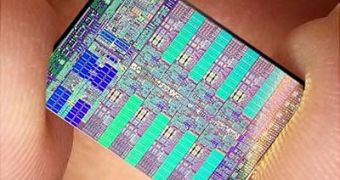IBM has recently confirmed that it will be pulling out of the development of the Cell processor, as the company plans to make the PowerXCell 8i model the last of its entrance in the technology. The said processor is part of a joint venture between the chip maker, Sony and Toshiba, the result of which has been enabled in one of the world's most successful gaming consoles, the PlayStation 3, as well as other TVs or supercomputers.
The Cell processor is unique, when compared to traditional processing units in today's personal computer systems. The processor is designed with a central general-processing unit, coupled with a number of co-processing units, with internal memory, better known as SPUs. These are responsible for increasing the performance of the Cell CPU, but have also been responsible for some development difficulties encountered by a number of devs.
According to the German website, Heise Online, the current Cell processor, model PowerXCell 8i is where IBM's participation in the development of Cell will end. The company's Vice President, David Turek, told the aforementioned source that the previously planned 32 SPE Cell model will not be continued.
Pulling out of the development of the Cell processor doesn't mean the end, as Mr. Turek explained, as features of the Cell will continue to be integrated into other processor designs. Without any specific mention of an upcoming model, the company has mentioned that it plans on developing a hybrid technology, which will incorporate both graphics and processing power on a single chip. This is a direction that has been set by NVIDIA, and the launch of its much-anticipated Fermi-based graphics cards.
The news isn't necessarily bad for Sony, which can still hire IBM to create a Cell processor for the company's next-generation console, as this doesn't mean IBM will be involved in the development of Cell, outside the future PlayStation 4 console.

 14 DAY TRIAL //
14 DAY TRIAL //